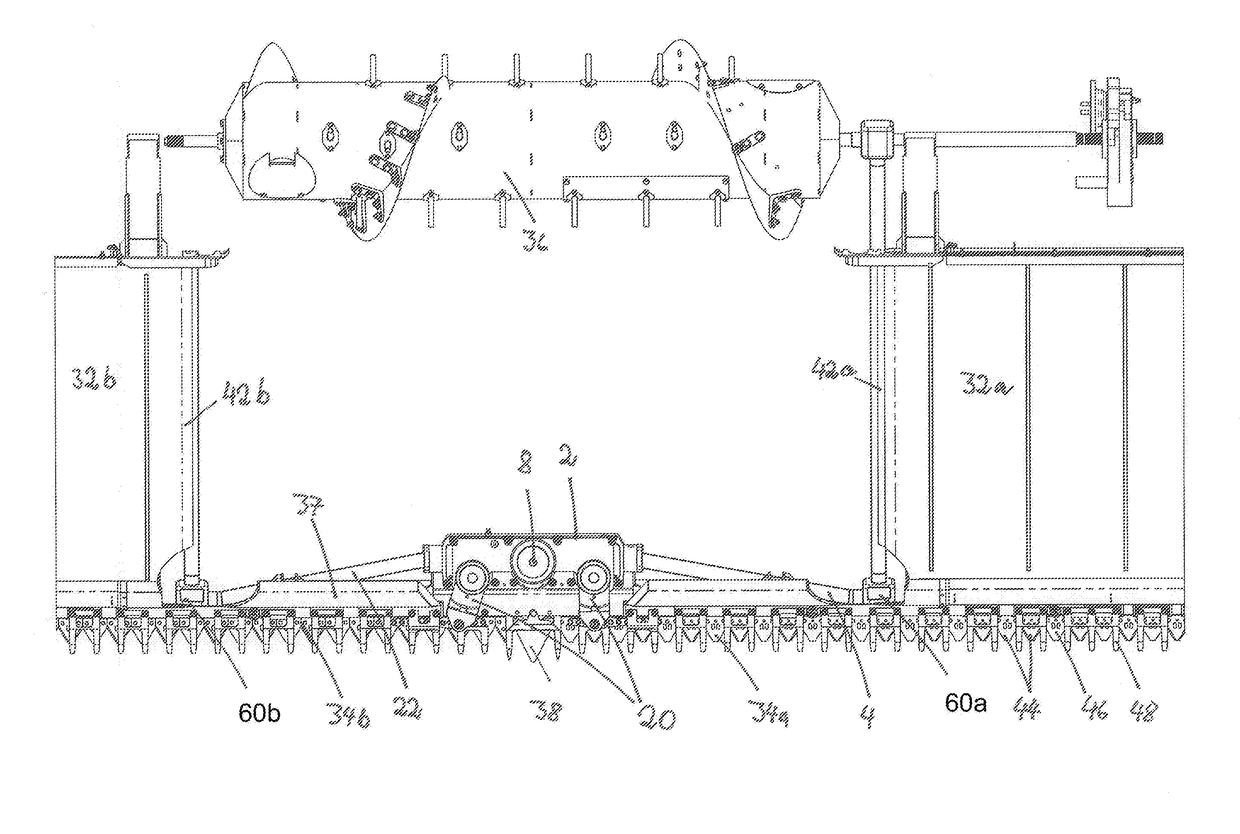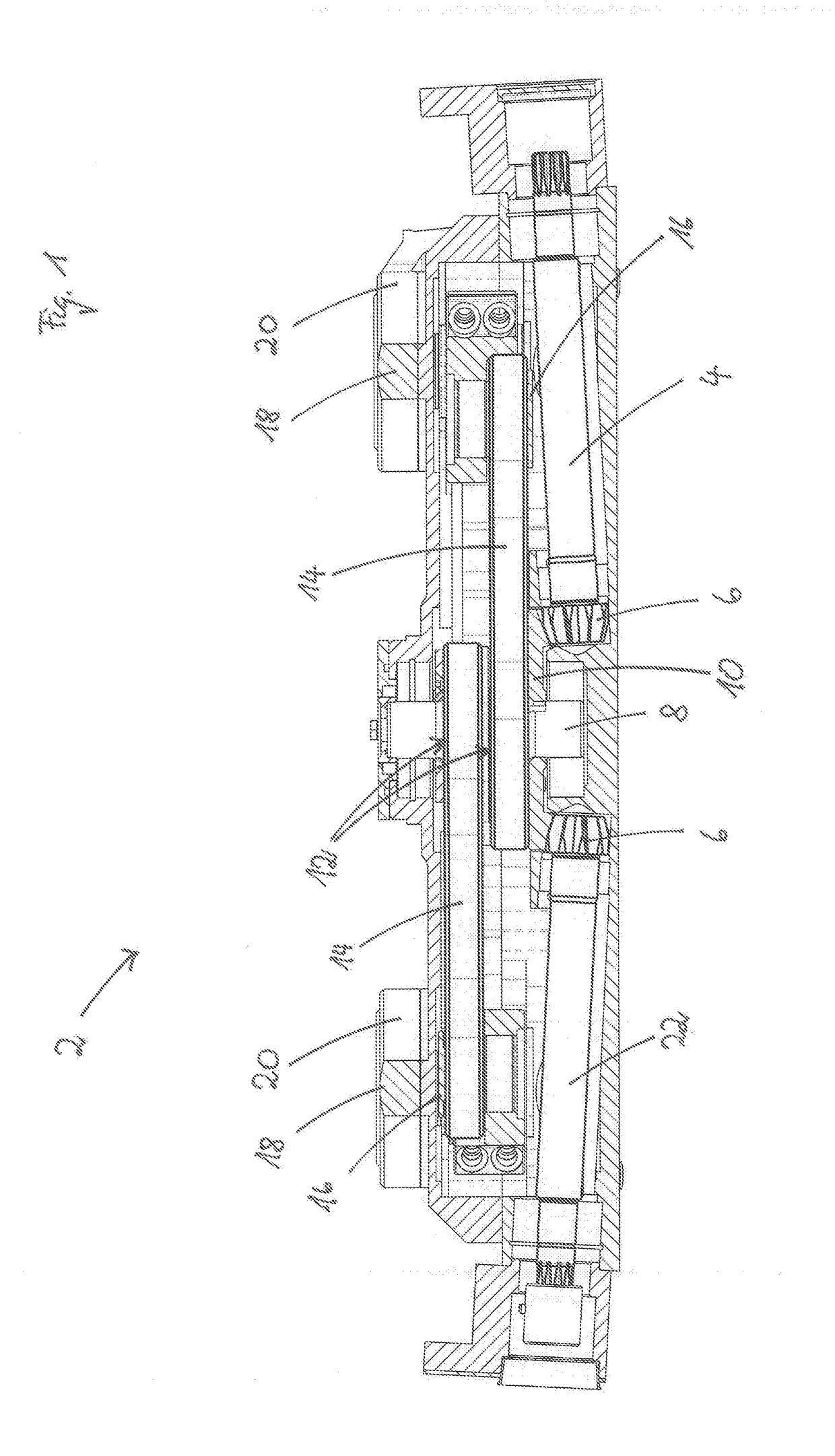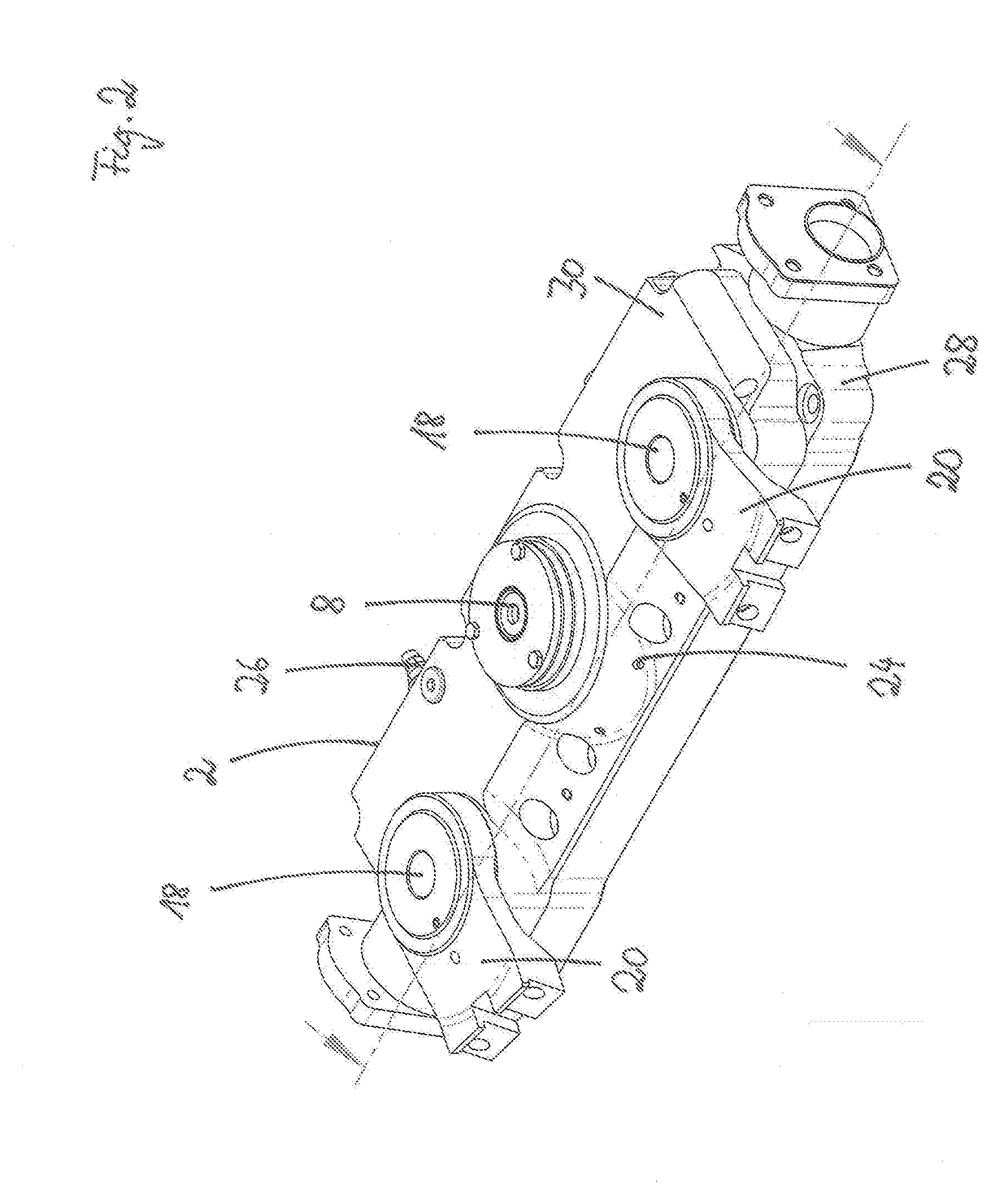Cutter Bar Drive for a Multi-Section Header for Attachment to Harvesters
- Summary
- Abstract
- Description
- Claims
- Application Information
AI Technical Summary
Benefits of technology
Problems solved by technology
Method used
Image
Examples
Embodiment Construction
[0028]In FIG. 1 a gear housing 2 is shown in a section view. In the lowermost plane of the gear housing 2, the drive shaft 4 extends into the gear housing 2. By means of a bevel gear 6 the rotary speed of the drive shaft 4 is transmitted to the gear wheel 10 that is fixedly arranged on the eccentric shaft 8 in a second plane above the drive shaft 4. In the embodiment, the drive shaft 4 is arranged approximately parallel to the cutter bar 34. In transverse direction, the drive shaft 4 is angled relative to the cutter bar 34 by some angular degrees in the horizontal and vertical planes. The same holds true for the output shaft 22. By means of the gear wheel 10, the eccentric shaft 8 is rotated also.
[0029]On the eccentric shaft 8 which is substantially installed in vertical direction into the gear housing 2, two eccentric discs 12, which are hidden by the eccentric levers 14 in the section view of FIG. 1, are arranged in the third and fourth planes. The eccentric levers 14 are joined f...
PUM
 Login to View More
Login to View More Abstract
Description
Claims
Application Information
 Login to View More
Login to View More - R&D
- Intellectual Property
- Life Sciences
- Materials
- Tech Scout
- Unparalleled Data Quality
- Higher Quality Content
- 60% Fewer Hallucinations
Browse by: Latest US Patents, China's latest patents, Technical Efficacy Thesaurus, Application Domain, Technology Topic, Popular Technical Reports.
© 2025 PatSnap. All rights reserved.Legal|Privacy policy|Modern Slavery Act Transparency Statement|Sitemap|About US| Contact US: help@patsnap.com



